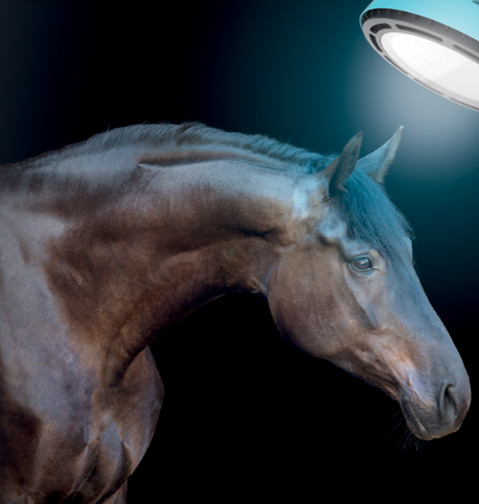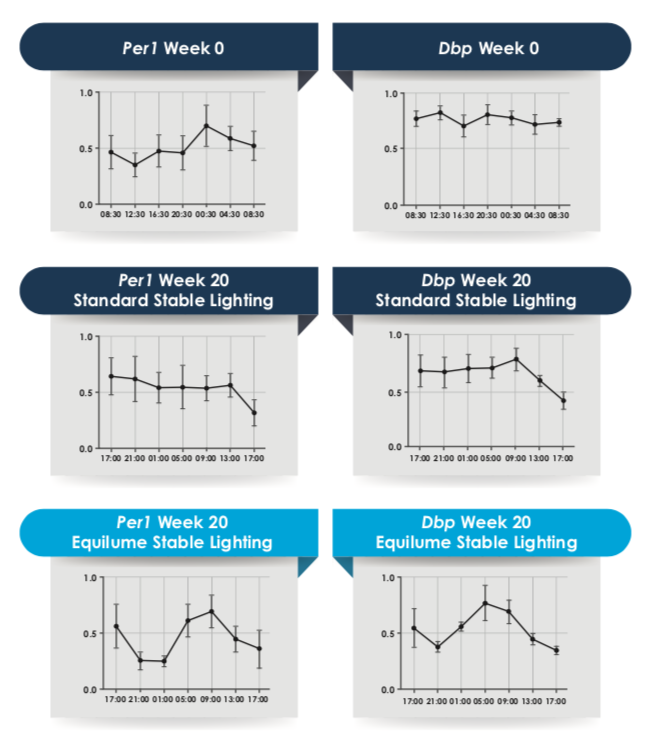
by Sarah Nash
Racehorses spend much of the 24-h day indoors and unexposed to optimal daylight intensities or to the natural fluctuations in the environmental light-dark cycle. Frequent interactions with horses during night-time hours result in erratic exposure to light at night. This regime negatively impacts the horse’s body clock and can result in impaired growth, reduced immune response and poor performance. Our R&D department, led by Dr Barbara Murphy conducted a research trial to determine if a customized stable lighting system that could better mimic the natural environmental light-dark cycles could influence body composition and peripheral rhythmicity in clock gene expression in horses in training. The customized stable lighting system was designed to provide the horse with blue-enriched white LED light by day, gradual transitions at dawn and dusk, red light at night and extended daily hours of light.
Methods
A collaboration between University College Dublin and Equilume’s R&D department conducted two separate studies. The first study comprised of fifty-four two-year-old thoroughbreds in training divided into two groups and blocked for gender. Group 1 were maintained under the customized stable lighting system. Group 2 were maintained under traditional lighting consisting of a single fluorescent tube. Body composition, body weight, and fat-free mass were determined at three-week intervals for fifteen weeks. All horses experienced an exercise regime consisting of morning exercise that gradually increased in intensity per week as fitness improved.
The second study employed a similar design but used a further enhanced stable lighting system with additional blue wavelength light by day. On weeks 0 and 20, hair follicle samples were collected at 4-h intervals over 24-h from 5 horses per group. Statistical analyses were conducted using Graph Pad Prism Version 7.0 for Mac.
Results

Horses maintained under the customized stable lighting system had a significantly higher fat-free mass (FFM) compared to control horses after 15 weeks of training. This was correlated with higher weight and improved coat condition. Increases in FFM, considered an important indicator of athletic ability, may contribute to improved performance in equine athletes.

Results from the second study show that strong circadian rhythms are observed in horses maintained under the customized stable lighting system only after 20 weeks and not in horses maintained under traditional fluorescent lighting.
Conclusions
The researchers concluded that the observed improvements in muscle mass likely occurs because of better alignment between the horse’s internal organs and the light-dark cycle. This improved internal synchronisation was evident by the strengthened circadian rhythmicity of clock genes in hair follicle cells in horses living under the Equilume lighting system. An optimised stable lighting system that brings the benefits of nature’s light indoors will have widespread benefits for a horse’s health, welfare and performance. Additional studies are underway to evaluate behavioural improvements and reductions in stereotypic behaviour that can be achieved under Equilume’s Stable Lighting system.
Find out more about Equilume in our Equipment section.

































